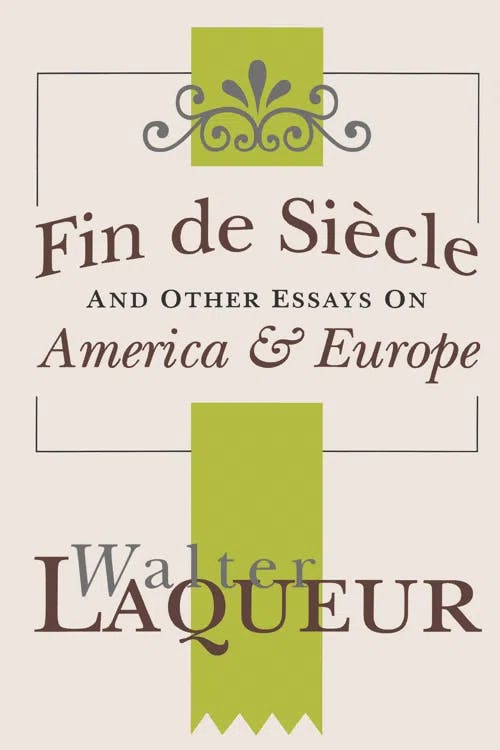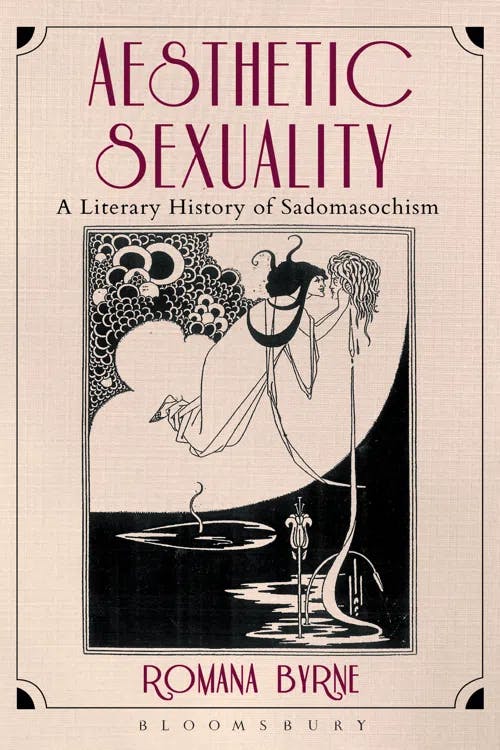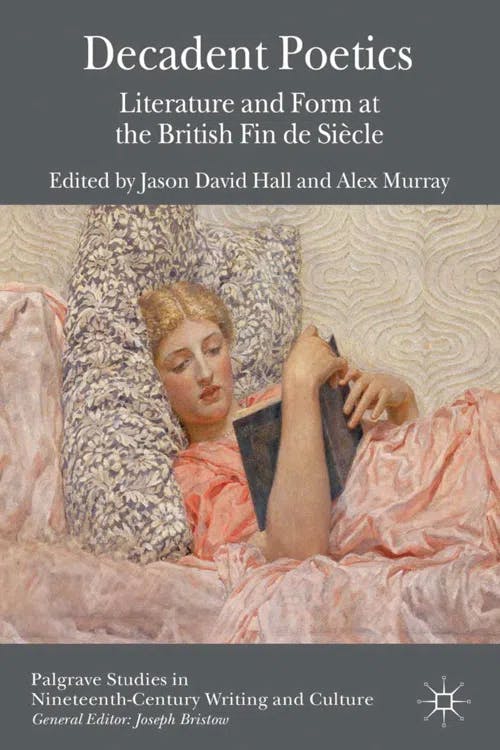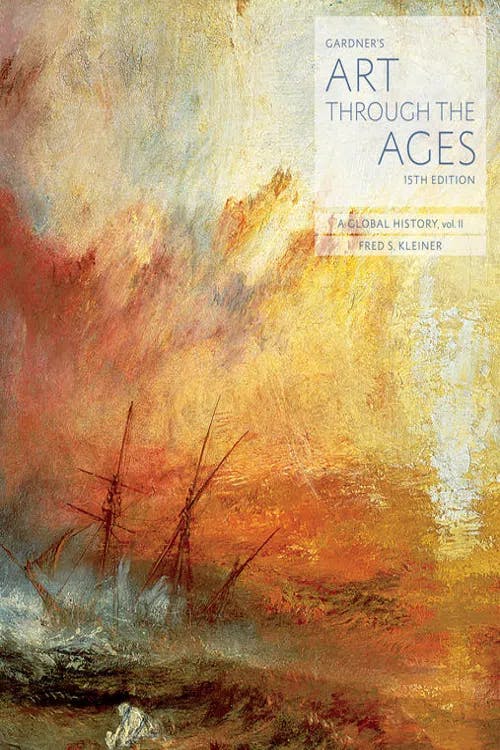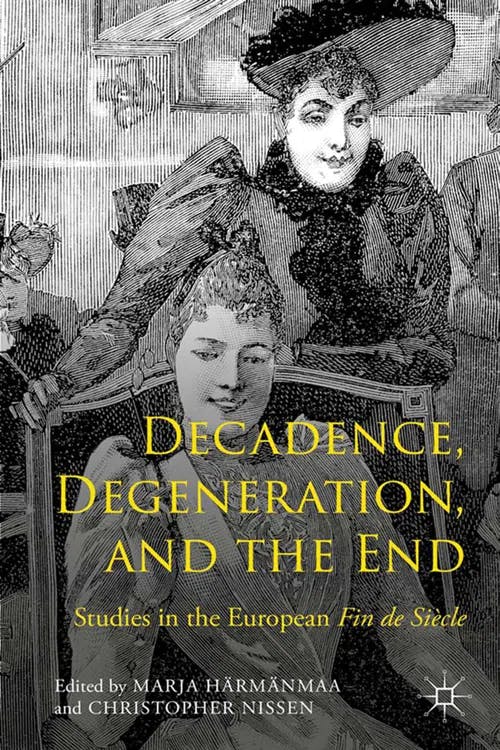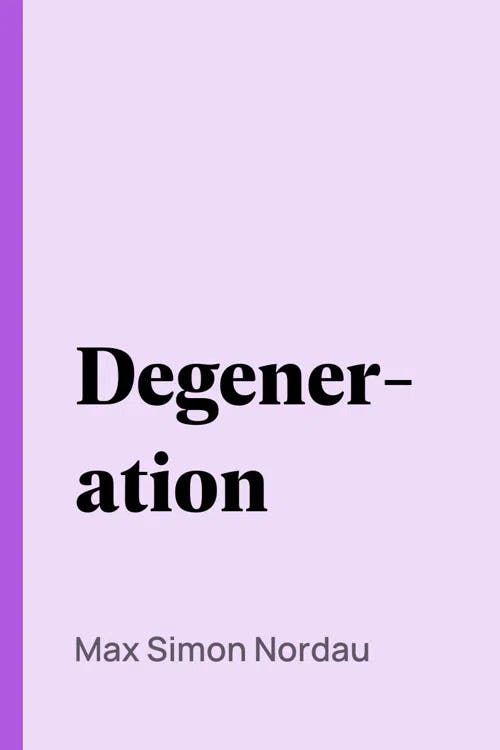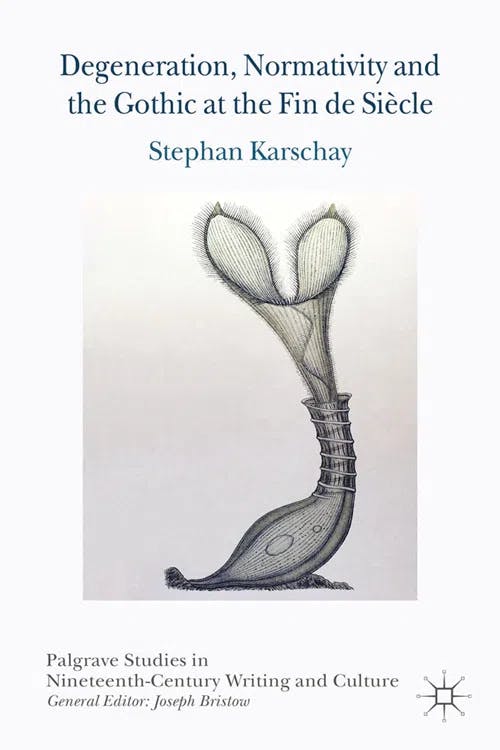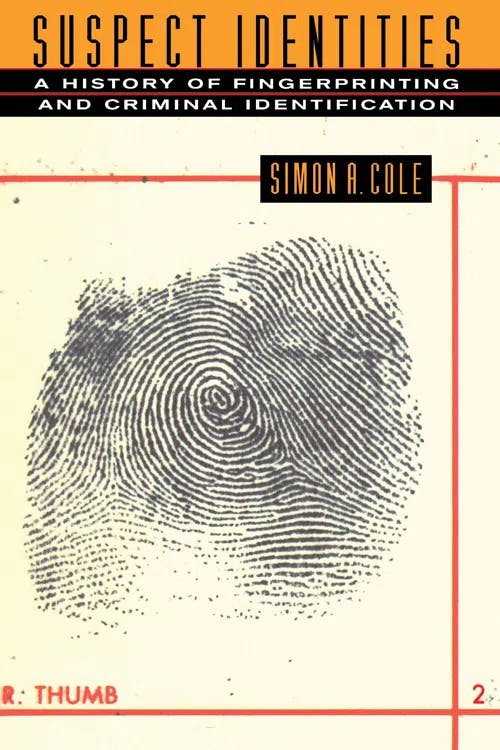What was the Fin de Siècle?
PhD, English Literature (Lancaster University)
Date Published: 03.05.2023,
Last Updated: 12.04.2024
Share this article
Fin de siècle (literally meaning “end of the century” in French) refers to the latter part of the nineteenth century, a period characterized by a mood of uneasiness, overstimulation, boredom, and concern for the future. More specifically, this phrase is used to describe the artistic and cultural climate in this period and the various works which emerged from this general feeling of fashionable world-weariness. This artistic and intellectual milieu began in France and eventually moved to England and other countries in Europe. As Walter Laqueur explains,
It was mainly (though not exclusively) a French phenomenon and it has been explained with reference to the lost war against Prussia, economic and demographic decline, the consumption of alcohol, the spread of atheism and of crime, the general decline of family ties, the deteriorations of morals. (Fin de Siècle and Other Essays on America and Europe, 2018)
Walter Laqueur
It was mainly (though not exclusively) a French phenomenon and it has been explained with reference to the lost war against Prussia, economic and demographic decline, the consumption of alcohol, the spread of atheism and of crime, the general decline of family ties, the deteriorations of morals. (Fin de Siècle and Other Essays on America and Europe, 2018)
Laqueur adds that the fin de siècle mood dissipated in France in 1905–6 and even earlier in Britain with the arrest of writer Oscar Wilde in 1896.
The fin de siècle is a crucial period in European cultural history with its emerging artistic and literary movements such as Aestheticism, Decadence, and Symbolism. It is worth noting that there is much overlap between each of these movements. For example, as we will go on to see, Oscar Wilde could be characterized at different points as an Aesthete and a Decadent.
Aestheticism (c. 1860–1900)
The end of the century ushered in a new way of viewing the purpose of art. There was a rallying against the conventional Victorian belief that art should have an ethical purpose and be used didactically to help people to navigate their moral lives. The Aesthetes, by contrast, believed that art should exist to be visually appealing and that morality (or even historical accuracy) had nothing to do with the merit of a work of art. Aestheticism is often identified with the famous slogan of “art for art’s sake.” Painter James McNeill Whistler stated in “The Red Rag” (1878),
Art should be independent of all clap-trap — should stand alone, and appeal to the artistic sense of eye or ear, without confusing this with emotions entirely foreign to it, as devotion, pity, love, patriotism, and the like. (Cited in Peter Dayon, Art as Music, Music as Poetry, Poetry as Art, from Whistler to Stravinsky and Beyond, 2016)
Peter Dayan
Art should be independent of all clap-trap — should stand alone, and appeal to the artistic sense of eye or ear, without confusing this with emotions entirely foreign to it, as devotion, pity, love, patriotism, and the like. (Cited in Peter Dayon, Art as Music, Music as Poetry, Poetry as Art, from Whistler to Stravinsky and Beyond, 2016)
The freeing of art from morality led to works which shocked Victorian middle-class sensibilities by focusing on subjects like pleasure and sexuality, designed to evoke an emotive response rather than to provide an ethical message. Algernon Charles Swinburne’s Poems and Ballads (1866, [2006]) caused outrage with its focus on masochism, flagellation, and paganism. However, as Romana Byrne argues in Aesthetic Sexuality (2013),
the beauty of Swinburne’s form, his “metric eloquence” and “versified rhetoric,” redeems him from the obscenity of his subject matter, transforming matter of “moral repulsiveness” into beautiful art. The Aesthetes believed that work such as Swinburne’s did not have an obligation to demonstrate morality to the public and should be viewed in terms of its form and lyricism.
Romana Byrne
the beauty of Swinburne’s form, his “metric eloquence” and “versified rhetoric,” redeems him from the obscenity of his subject matter, transforming matter of “moral repulsiveness” into beautiful art. The Aesthetes believed that work such as Swinburne’s did not have an obligation to demonstrate morality to the public and should be viewed in terms of its form and lyricism.
In The Decay of Lying (1891, [2018]), Oscar Wilde presents the tenets of Aestheticism through a Socratic dialogue.
1. “Art never expresses anything but itself.”
Art is independent of the narrative, morality, or ideologies the public attaches to it. Art, according to the Aesthetes, should not fulfill any real function except to be sensually appealing. In the preface to Mademoiselle de Maupin (1835) Théophile Gautier, one of the most notable figures within Aestheticism, wrote that,
Nothing is really beautiful unless it is useless; everything useful is ugly, for it expresses a need, and the needs of man are ignoble and disgusting, like his weak infirm nature. The most useful place in a house is the lavatory. (Théophile Gautier, cited in Jordan Kistler, Arthur O'Shaughnessy, A Pre-Raphaelite Poet in the British Museum, 2016)
Jordan Kistler
Nothing is really beautiful unless it is useless; everything useful is ugly, for it expresses a need, and the needs of man are ignoble and disgusting, like his weak infirm nature. The most useful place in a house is the lavatory. (Théophile Gautier, cited in Jordan Kistler, Arthur O'Shaughnessy, A Pre-Raphaelite Poet in the British Museum, 2016)
2. Art should not copy reality.
Wilde believed that artists should rely upon their imaginations rather than copying the real world. The critic, therefore, should take into account the form (or beauty) of the piece rather than the content. For example, if a painting would be more beautiful and aesthetically pleasing with the use of bold and vivid colors, the artist should use such colors, rather than adhering to realistic, neutral tones.
3. “Life imitates art.”
We strive to be like the art we see, and we are influenced by the art we consume.
4. “Lying, the telling of beautiful untrue things, is the proper aim of Art.”
Artists should not be restricted by facts or an obligation to tell the truth, as art is, by its nature, deceptive.
The Decadent movement (c. 1880–95)
Emerging from, and often overlapping with, Aestheticism’s valuation of art for art’s sake was the Decadent movement. The Decadents similarly believed that art should be appreciated on its own merits and be unconnected to politics, religion, and morality. The Decadents further valued excess and manmade art over the natural world. The Decadents also argued that creative outputs were a way of overcoming the natural predisposition humans had toward boredom and dissatisfaction.
This notion was inspired in part by the cynical philosophy of Arthur Schopenhauer who believed that human misery came from unsatisfied needs and desires which could only be relieved through art and the rejection of the self. In Decadent Poetics, Jason David Hall and Alex Murray write,
Decadence, then, as a literary practice, amounts to a critique of the nineteenth-century idea of ‘decadence’ [...], a challenge to the materialism of modernity, a counterpointing to its deadening conformity and complacency. (2013)
Edited by Jason David Hall and Alex Murray
Decadence, then, as a literary practice, amounts to a critique of the nineteenth-century idea of ‘decadence’ [...], a challenge to the materialism of modernity, a counterpointing to its deadening conformity and complacency. (2013)
As John Jervis explains,
decadence can be mapped on to this sense of the modern lived as excess, seen as ‘dissipation’ in all its several senses, as pleasure, ennui, exhaustion, and transgression. The decadent is always the enjoyment of corruption and impurity, the wallowing in life as exile, as dissolution, embracing life as old, grotesque, sick. Decadence testifies to the lateness in the modern, the modern as over-ripe, rotten, the culmination that draws on nature experienced as the ‘other’ side of life, pointing towards death, the exploration of sickness and death as themes in culture that effect a spiritualization of the latter. (Jervis, “The Modernity of the Fin De Siècle”, in The Fin-de-Siècle World, 2014)
Edited by Michael Saler
decadence can be mapped on to this sense of the modern lived as excess, seen as ‘dissipation’ in all its several senses, as pleasure, ennui, exhaustion, and transgression. The decadent is always the enjoyment of corruption and impurity, the wallowing in life as exile, as dissolution, embracing life as old, grotesque, sick. Decadence testifies to the lateness in the modern, the modern as over-ripe, rotten, the culmination that draws on nature experienced as the ‘other’ side of life, pointing towards death, the exploration of sickness and death as themes in culture that effect a spiritualization of the latter. (Jervis, “The Modernity of the Fin De Siècle”, in The Fin-de-Siècle World, 2014)
The Decadents were inspired by the work of French poet Charles Baudelaire. Baudelaire’s writing was highly influenced by the works of American Gothic writer Edgar Allan Poe. His volume of poetry, Les Fleurs du Mal (1857), translated as The Flowers of Evil, epitomizes the Decadent style with its Gothic and erotic imagery. The French government found the collection so provocative that they demanded that six of the poems be removed from the collection.
In his introduction to The Flowers of Evil, F. P. Sturm writes,
Baudelaire is decadence; his art is not a mere literary affectation, a mask of sorrow to be thrown aside when the curtain falls, but the voice of an imagination plunged into the contemplation of all the perverse and fallen loveliness of the world. (Sturm, 2012)
Charles Baudelaire, translated by F. P. Sturm, W. J. Robertson and Joseph Shipley
Baudelaire is decadence; his art is not a mere literary affectation, a mask of sorrow to be thrown aside when the curtain falls, but the voice of an imagination plunged into the contemplation of all the perverse and fallen loveliness of the world. (Sturm, 2012)
Baudelaire’s melancholia is captured by the artistic works of the Decadents who followed him, artists and writers whom Sturm goes on to describe as,
[...] by turns morbid, hysterical, foolishly blasphemous, or weakly disgusting, but never anything for long, their one desire being to produce a thrill at any cost. If the hospital failed they went to the brothel, and when even obscenity failed to stimulate the jaded palates of their generation there was still the graveyard left. (2012)
Other Decadent writers include Arthur Machen and Oscar Wilde. Wilde’s The Picture of Dorian Gray (1890, [2010]), for example, features the eponymous Dorian who is listless and bored, living a hedonistic lifestyle that perfectly encapsulates the spirit of the age. Wilde himself was central to the Decadent movement due to his high visibility in London society; a famed dandy, he dressed lavishly, started trends, and lived as a prominent figure in the public eye.
Symbolism (c. 1886–1900)
Symbolism began in France and Belgium in the 1880s with the publication of Jean Moréas’ The Symbolist’s Manifesto (1886). Symbolists believed that art should come from emotions and that the artist should not aim to represent the world as it actually is. Many symbolists painted images from their dreams. One of the most well-known paintings of this artistic movement is Edvard Munch’s The Scream (1893), part of a series of paintings entitled The Frieze of Life, which quickly became a cultural symbol for the fin de siècle. In this painting, Munch uses bold, expressive colors to show a world dissolving into chaos. The most prominent figure in the painting clamps his hands over his ears as a way to block out the scream, while the figures in the background remain oblivious.
Fred S. Kleiner writes that the painting
exemplifies [Munch’s] style and remains to this day one of the most potent symbols of the unbearable pressures of modern life on individual people. The image — a man standing on a bridge — belongs to the real world. In fact, the inspiration for the painting came after Munch had experienced a fit of anxiety after walking, intoxicated, across an Oslo bridge on a summer evening. (Gardner's Art through the Ages, 2015)
Fred Kleiner
exemplifies [Munch’s] style and remains to this day one of the most potent symbols of the unbearable pressures of modern life on individual people. The image — a man standing on a bridge — belongs to the real world. In fact, the inspiration for the painting came after Munch had experienced a fit of anxiety after walking, intoxicated, across an Oslo bridge on a summer evening. (Gardner's Art through the Ages, 2015)
While Munch addresses the impacts of everyday life, he uses his imagination (and influences from impressionist and post-impressionist painters) to depict a nightmarish rendering of the modern world.
Degeneration
The Decadence movement sparked concern over declining moralities towards the end of the nineteenth century. Some thinkers believed that the attitudes and behaviors present in fin de siècle decadence would cause degeneration within society. Degeneration theory argued that individuals could devolve. Writers such as Max Nordau and Cesare Lombroso proposed that some people were already degenerate, born with a biological make-up that rendered them ‘other’ and a potential threat to the rest of the population. Lombroso in Criminal Man (1876, [2006]) argues that even the skulls of criminals are different from those of non-criminals. Lombroso identified several supposed biological traits of the “born criminal” including asymmetrical facial features and a sloping forehead.
As Christopher Nissen and Marja Härmänmaa explain,
Decadence and degeneration began to be regarded as sociological phenomena, and indeed they attained a pseudoscientific status in the medical studies of psychiatrists and doctors. (Decadence, Degeneration, and the End, 2014).
Edited by Marja Härmänmaa and Christopher Nissen
Decadence and degeneration began to be regarded as sociological phenomena, and indeed they attained a pseudoscientific status in the medical studies of psychiatrists and doctors. (Decadence, Degeneration, and the End, 2014).
In Degeneration (1895, [2016]), Nordau denounces fin-de-siècle decadence as a passing fad and argues that the temperament of the period may result in degeneration and criminality. He writes,
But the physician, especially if he have devoted himself to the special study of nervous and mental maladies, recognises at a glance, in the fin de siècle disposition, in the tendencies of contemporary art and poetry, in the life and conduct of the men who write mystic, symbolic and ‘decadent’ works, and the attitude taken by their admirers in the tastes and æsthetic instincts of fashionable society, the confluence of two well-defined conditions of disease, with which he is quite familiar, viz. degeneration (degeneracy) and hysteria, of which the minor stages are designated as neurasthenia. (1895, [2016])
Max Simon Nordau
But the physician, especially if he have devoted himself to the special study of nervous and mental maladies, recognises at a glance, in the fin de siècle disposition, in the tendencies of contemporary art and poetry, in the life and conduct of the men who write mystic, symbolic and ‘decadent’ works, and the attitude taken by their admirers in the tastes and æsthetic instincts of fashionable society, the confluence of two well-defined conditions of disease, with which he is quite familiar, viz. degeneration (degeneracy) and hysteria, of which the minor stages are designated as neurasthenia. (1895, [2016])
In other words, those who admire or produce artistic works that contribute to the Decadent movement are, according to Nordau, likely to be afflicted with physical and mental maladies such as hysteria and degeneracy.
As Nissen and Härmänmaa write,
For Nordau, Decadence equals depravity: the unhealthy Decadent unreasonably projects his own misery onto that of the flourishing world around him, and thus yearns to drag it down to his level, to make the rest of the society behave as antisocially as he does. (2014)
Decadence, therefore, becomes epidemic, capable of dragging down society with loose morals and making society regress back to an atavistic state.
As S. Karschay points out, the categorization of anything different as “degenerative” created a new marginalized group consisting of anyone who did not meet the physical specification of “normality” as described by the likes of Lombroso and Nordau. As Stephan Karschay writes,
In the process of this excessive taxonomical activity, supposedly degenerate individuals were stigmatised as social Others. Branded as diseased, deformed, deviant and dangerous, they were excluded from society’s normative field and relegated to a sprawling realm of transgression. (Degeneration, Normativity and the Gothic at the Fin de Siècle, 2015)
Stephan Karschay
In the process of this excessive taxonomical activity, supposedly degenerate individuals were stigmatised as social Others. Branded as diseased, deformed, deviant and dangerous, they were excluded from society’s normative field and relegated to a sprawling realm of transgression. (Degeneration, Normativity and the Gothic at the Fin de Siècle, 2015)
It is important, however, to recognize that not everyone fully accepted degeneration as a valid theory. As Karschay goes on to explain,
Individual commentators did not universally agree on degeneration’s empirical reality as an urban phenomenon, and the affective responses of those who acknowledged its existence ranged all the way from apocalyptic pessimism through solicitous concern to optimistic insouciance. Yet, as almost any critic of the Victorian period [...] would underline, notions of degeneration dominate intellectual and popular debate at the end of the nineteenth century, and degeneration theory informs much of fin-de-siècle fiction, particularly the Gothic. (2015)
As we will go on to see, Gothic literature in this period either propagated the ideas of degeneration theorists or sought to challenge the assumptions about the physical manifestations of criminality.
Gothic literature
The Victorian public’s obsession with degeneracy, criminality, and moral decay proved fruitful for many Gothic writers (see our study guide on Gothic literature and film for more on the Gothic tradition and its key elements, as well as our related guide on weird fiction). Fin de siècle Gothic authors tended to set their tales in the heart of London and, in keeping with the Urban Gothic tradition, depicted it as a labyrinthine space designed to conceal criminal deeds. The malevolent cityscape was the perfect home for iconic criminals and monsters. We see in Wilde’s The Picture of Dorian Gray and Robert Louis Stevenson’s Strange Case of Dr. Jekyll and Mr. Hyde (1886, [2015]) how the eponymous characters are able to hide in and navigate their way through the city, its sprawl accommodating their nefarious deeds. Thanks to urbanization and industrialization, the city was becoming an unknowable place. This fear of urban living was exacerbated when the streets of Whitechapel became terrorized by the serial killer Jack the Ripper between 1888 and 1891.
Writers also created monsters whose grotesque physiognomies were inspired by writings on degeneracy as well as Charles Darwin’s The Descent of Man (1871, [2020]). Bram Stoker’s classic novel Dracula (1897, [2012]) presents the titular vampire as imbued with all of the physical characteristics of the atavistic criminal. Dracula is described as having an “aquiline face,” “thin nose,” “domed forehead,” and “pointed ears,” similar to the descriptions of the degenerate or the criminal as envisioned by Lombroso and Nordau (Stoker, 1897, [2012]) .
Fears of the atavistic criminal inform Stevenson’s Strange Case of Dr. Jekyll and Mr. Hyde. The novella features Edward Hyde (the monstrous alter ego of the reputable Henry Jekyll), who is described in terms of his hideous appearance. He is referred to as a “juggernaut” and “dwarfish,” giving “an impression of deformity” (Stevenson, 1886, [2015]). However, rather than simply constructing monsters from anxieties around criminality in his novella, Stevenson challenges the notion that criminality and evil can be detected in a person based entirely on their physical appearance. As Simon A. Cole writes,
In the Jekyll-Hyde character, Stevenson drew attention to a problem that was much on the minds of contemporary jurists and criminal anthropologists alike. In modern, anonymous, socially mobile societies, distinctive dress, appearance, and accent were losing their power to convey social status at a glance. These emerging societies were brimming with people who were strangers, both to one another and to the state. The most heinous criminal could appear in the most innocent guise. (Suspect Identities, 2009)
Simon A. Cole
In the Jekyll-Hyde character, Stevenson drew attention to a problem that was much on the minds of contemporary jurists and criminal anthropologists alike. In modern, anonymous, socially mobile societies, distinctive dress, appearance, and accent were losing their power to convey social status at a glance. These emerging societies were brimming with people who were strangers, both to one another and to the state. The most heinous criminal could appear in the most innocent guise. (Suspect Identities, 2009)
While Hyde is described with the stereotypical image of the degenerate, he is able to rescind into the form of the gentlemanly Jekyll, showing that depravity can be hidden behind a veneer of respectability. A similar argument can be seen in Wilde’s The Picture of Dorian Gray: the beautiful, perpetually young Dorian commits heinous acts as a supernatural portrait retains all of his sins.
The transforming or mutating body was also used as an avenue to explore other issues such as the emergence of the New Woman. The New Woman was a term used to describe women in the nineteenth century who resisted traditional roles as wives and mothers and sought independence, threatening preconceived notions of femininity. The New Woman faced much resistance; she was often presented as aggressive, promiscuous, masculine, and child-hating. In Degeneracy, for example, Nordau criticizes the New Woman’s style of dress and behavior.
In Gothic fiction, we can see examples of the New Woman represented as monstrous and unnatural. In Arthur Machen’s short story “The Great God Pan” (1894, [2018]), the character Helen Vaughan, the result of a scientific experiment, is presented as a sexually liberated woman who causes the ruin of the men she comes into contact with. When Helen is forced to kill herself at the end of the narrative, she undergoes a strange mutation, shifting from “sex to sex” before disintegrating into an unidentifiable substance. Tabitha Sparks explains,
By attributing Helen’s deviance to her inextricable sexuality, Machen assigns Helen’s androgyny to the realm of gothic fantasy, and invokes the logic that naturalizes “good” (passive) femininity as a physiological standard. (The Doctor in the Victorian Novel, 2016)
Tabitha Sparks
By attributing Helen’s deviance to her inextricable sexuality, Machen assigns Helen’s androgyny to the realm of gothic fantasy, and invokes the logic that naturalizes “good” (passive) femininity as a physiological standard. (The Doctor in the Victorian Novel, 2016)
In depicting Helen as an evil abomination, Machen reaffirms traditional sexual roles, suggesting deviations from this are unnatural and dangerous.
The fin de siècle marked a shift away from traditional Victorian values and the onset of modernity. Numerous culturally and intellectually important works of art and literature sprung from this period ranging from artwork such as Munch’s The Scream to Stoker’s Dracula. The uneasiness and world-weariness which defined the period, rather than resulting in existential despair, culminated in a myriad of important literary and artistic works which came to define the period.
Further reading on Perlego
Dowling, L. C. (2014) Language and Decadence in the Victorian Fin de Siècle. Princeton University Press. Available at:
https://www.perlego.com/book/737321/language-and-decadence-in-the-victorian-fin-de-siècle-pdf
Navarette, S. J. (2021) The Shape of Fear: Horror and the Fin de Siècle Culture of Decadence. University Press of Kentucky. Available at:
Ferguson, C. (2017) Language, Science and Popular Fiction in the Victorian Fin-de-Siècle: The Brutal Tongue. Routledge. Available at:
What was the fin de siècle in simple terms?
What were some of the main movements associated with the fin de siècle?
What are some prominent literary works of the fin de siècle?
Bibliography
Baudelaire, C. (1857, [2012]) The Flowers of Evil. Translated by F. P. Sturm, W. J. Robertson, and J. T. Shipley. Barnes and Noble. Available at: https://www.perlego.com/book/3716158/the-flowers-of-evil-barnes-noble-digital-library-and-other-writings-pdf
Byrne, R. (2013) Aesthetic Sexuality: A Literary History of Sadomasochism. Bloomsbury Publishing. Available at: https://www.perlego.com/book/818297/aesthetic-sexuality-a-literary-history-of-sadomasochism-pdf
Cole, S. A. (2009) Suspect Identities: A History of Fingerprinting and Criminal Identification. Harvard University Press. Available at: https://www.perlego.com/book/1147076/suspect-identities-pdf
Darwin, C. (1871, [2020]) The Descent of Man and Selection in Relation to Sex. Read Books Ltd. Available at: https://www.perlego.com/book/1416753/the-descent-of-man-and-selection-in-relation-to-sex-pdf
Dayan, P. (2016) Art as Music, Music as Poetry, Poetry as Art, from Whistler to Stravinsky and Beyond. Routledge. Available at: https://www.perlego.com/book/1633881/art-as-music-music-as-poetry-poetry-as-art-from-whistler-to-stravinsky-and-beyond-pdf
Editorial Staff of the National Museum (no date) Edvard Munch and "The Scream" in the National Museum. Available at: https://www.nasjonalmuseet.no/en/stories/explore-the-collection/edvard-munch-and-the-scream-in-the-national-museum/
Hall, J. and Murray, A. (eds.) (2013) Decadent Poetics: Literature and Form at the British Fin de siècle. Palgrave Macmillan. Available at: https://www.perlego.com/book/3486575/decadent-poetics-literature-and-form-at-the-british-fin-de-sicle-pdf
Kistler, J. (2016) Arthur O’Shaughnessy, A Pre-Raphaelite Poet in the British Museum. Routledge. Available at: https://www.perlego.com/book/1633943/arthur-oshaughnessy-a-preraphaelite-poet-in-the-british-museum-pdf
Kleiner, F. S. (2015) Gardner's Art through the Ages: A Global History. Vol 2. Cengage Learning EMEA. Available at: https://www.perlego.com/book/801707/gardners-art-through-the-ages-a-global-history-volume-ii-pdf
Laqueur, W. (2018) Fin de Siècle and Other Essays on America and Europe. Routledge. Available at: https://www.perlego.com/book/1381650/fin-de-siecle-and-other-essays-on-america-and-europe-pdf
Lombroso, C. (1876, [2006]) Criminal Man. Translated by M. Gibson and N. H. Rafter. Duke University Press Books. Available at: https://www.perlego.com/book/1465805/criminal-man-pdf
Machen, A. (1894, [2018]) The Great God Pan. Endymion Press. Available at: https://www.perlego.com/book/1886365/the-great-god-pan-pdf
Moréas, J. (1886, [2019]) The Symbolist’s Manifesto. A. Cline (trans). Available at: https://www.poetryintranslation.com/PITBR/French/MoreasManifesto.php
Nissen, C. and Härmänmaa, M. (2014) Decadence, Degeneration, and the End: Studies in the European Fin de Siècle. Palgrave Macmillan. Available at: https://www.perlego.com/book/3487806/decadence-degeneration-and-the-end-studies-in-the-european-fin-de-sicle-pdf
Nordau, M. S. (1892, [2016]) Degeneration. Perlego. Available at: https://www.perlego.com/book/1821690/degeneration-pdf
Saler, M. (2014) The Fin-de-Siècle World. Routledge. Available at: https://www.perlego.com/book/1558782/the-findesicle-world-pdf
Sparks, T. (2016) The Doctor in the Victorian Novel: Family Practices. Routledge. Available at: https://www.perlego.com/book/1633314/the-doctor-in-the-victorian-novel-family-practices-pdf
Stevenson, R. L. (1886, [2015]) Strange Case of Dr Jekyll and Mr Hyde. 3rd edn. Broadview Press. Available at: https://www.perlego.com/book/2030514/strange-case-of-dr-jekyll-and-mr-hyde-third-edition-pdf
Stoker, B. (1897, [2012]) Dracula. HarperCollins. Available at: https://www.perlego.com/book/670643/dracula-pdf
Sturm, F. P., Robertson, W. J., and Shipley, J. Shipley (2012) “Introduction” in C. Baudelaire, The Flowers of Evil. Barnes and Noble. Available at: https://www.perlego.com/book/3716158/the-flowers-of-evil-barnes-noble-digital-library-and-other-writings-pdf
Swinburne, A. C. (2006) Poems and Ballads (Third Series). Perlego. Available at: https://www.perlego.com/book/1728483/poems-and-ballads-third-series-taken-from-the-collected-poetical-works-of-algernon-charles-swinburnevol-iii-pdf
Wilde, O. (1891, [2018]) The Decay of Lying. Alma Classics. Available at: https://www.perlego.com/book/1309998/decay-of-lying-pdf
Wilde, O. (1890, [2010]) The Picture of Dorian Gray. HarperCollins. Available at: https://www.perlego.com/book/669650/the-picture-of-dorian-gray-pdf
PhD, English Literature (Lancaster University)
Sophie Raine has a PhD from Lancaster University. Her work focuses on penny dreadfuls and urban spaces. Her previous publications have been featured in VPFA (2019; 2022) and the Palgrave Handbook for Steam Age Gothic (2021) and her co-edited collection Penny Dreadfuls and the Gothic was released in 2023 with University of Wales Press.

